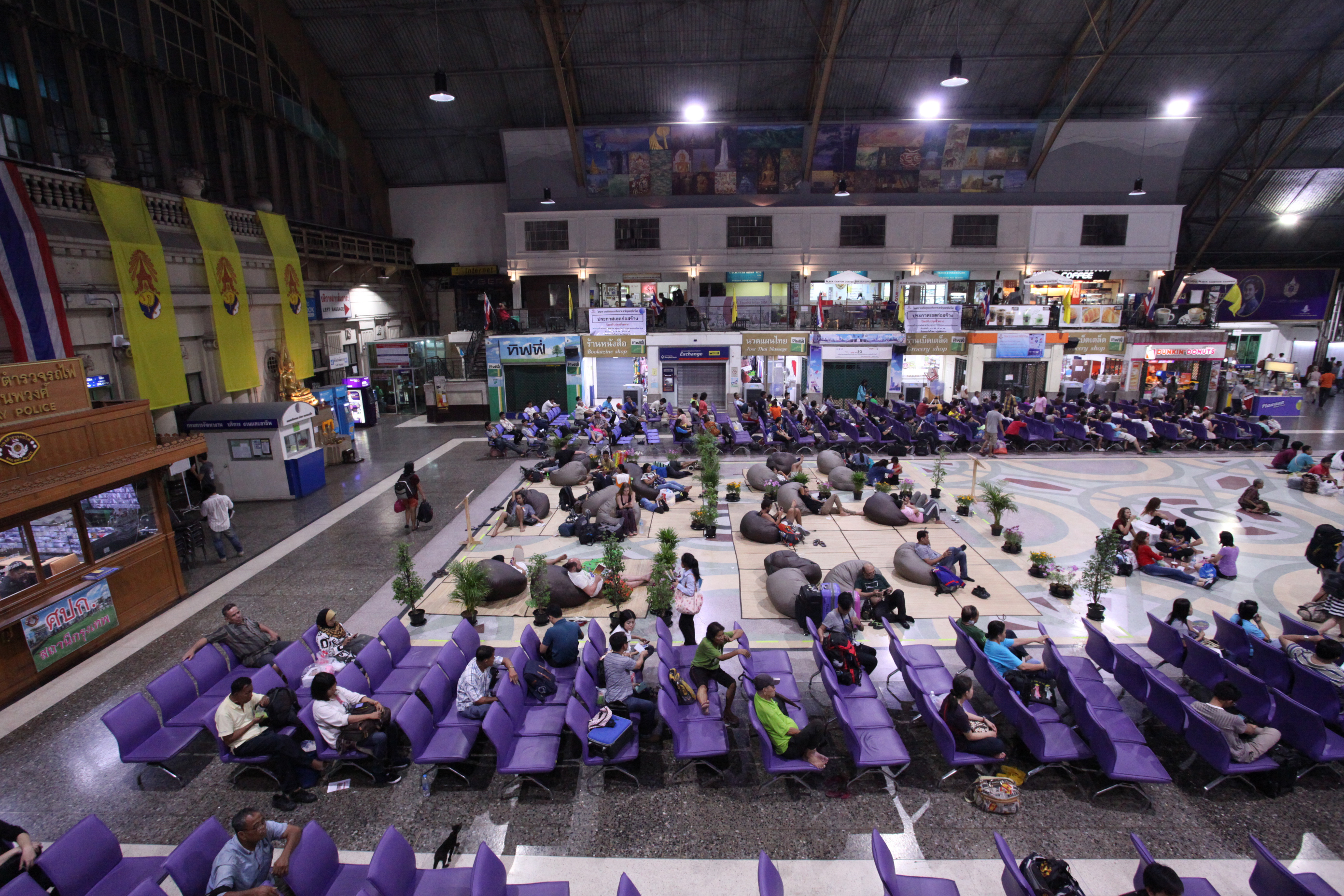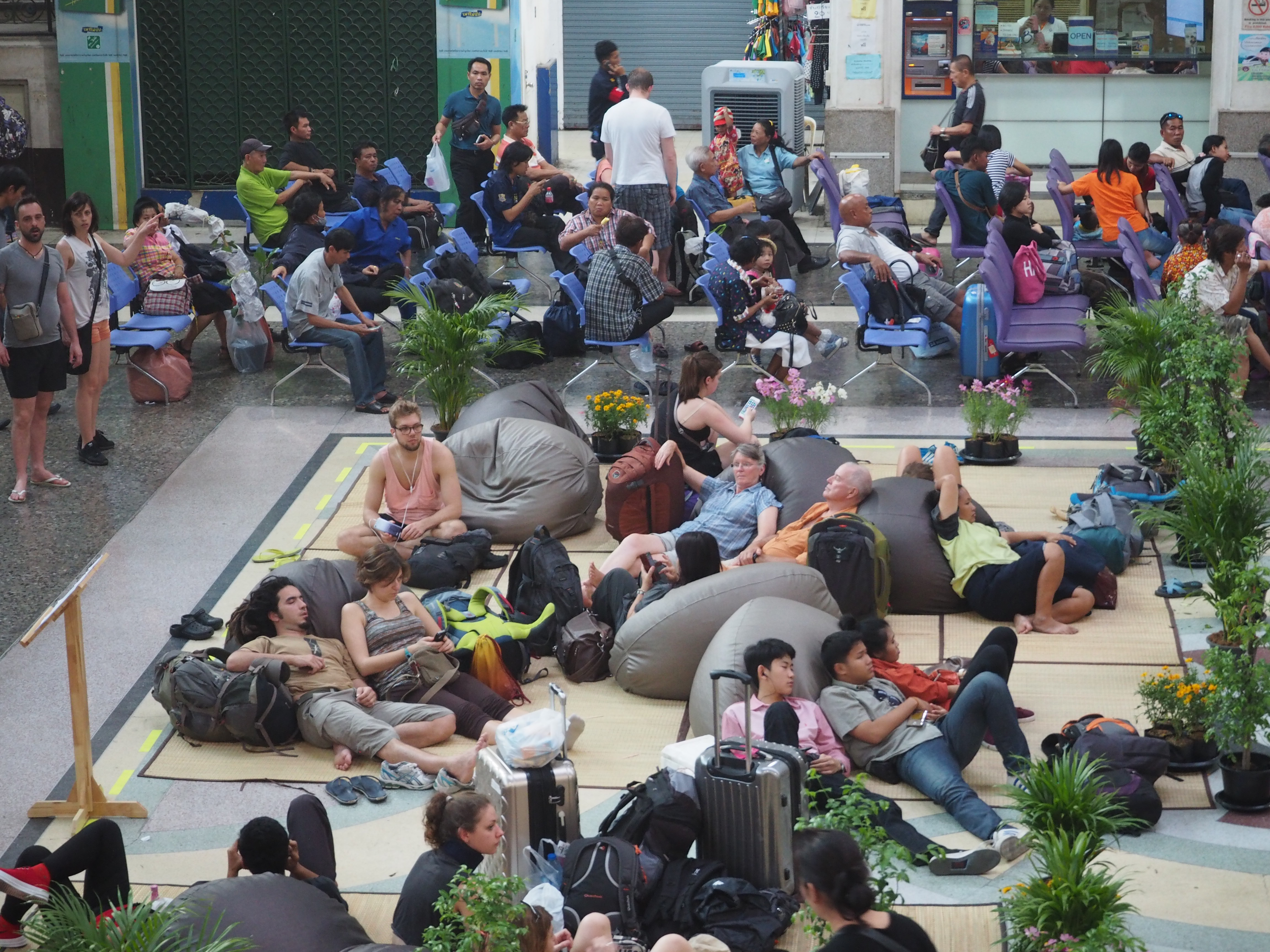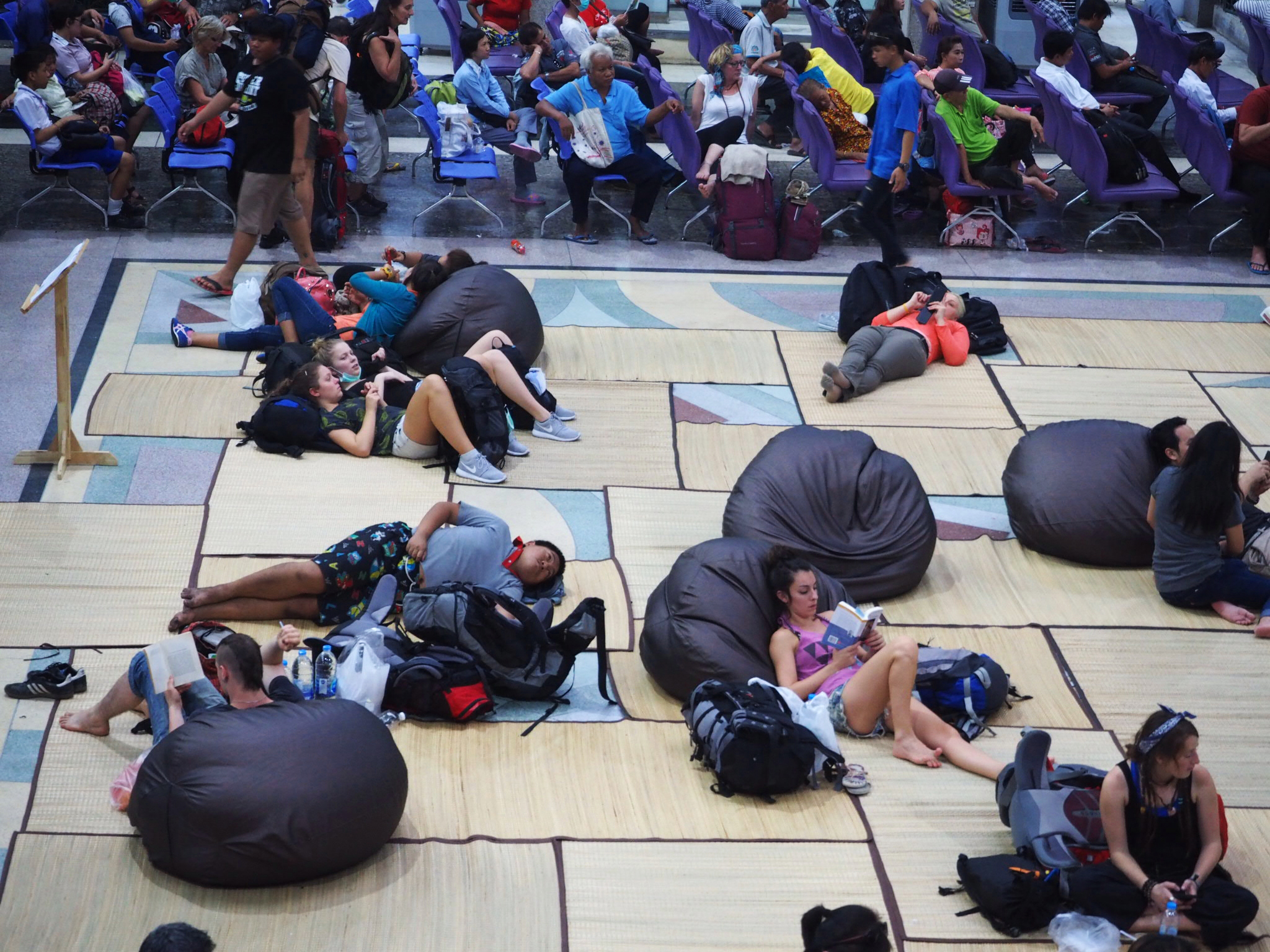Hua Lamphong is the biggest train station in Thailand so it is the public space that has witnessed various types of people. Yet, the station is governed by strict rules. No one is allowed to sit on the floors. It is a legacy thinking of the elites who have tried to make sure that Thailand appears modernized and cultured. “Public Transit Lounge” is an experimental project taking place in a mass transit setting. We placed 40 locally crafted woven mats along with other furniture and plants at the heart of Hua Lamphong Station, which is the grand central train station in Bangkok, in order to observe how visitors to the station would behave with the addition of the new public furniture. We want people to question and discuss the notion of ‘public space’ as understood by the Thai elites and those who hold authority. The ability to question is a basic human right and an important part of the democratization process. Our experiment at Hua Lamphong allows for other possibilities, other than a place for waiting, within the space to be explored. We hope that our experiment raises questions for the usage of other public spaces in Thailand and emphasizes the importance of citizen engagement and involvement in designing and operating a ‘public’ space.
ASA-Community Act Network: Project Organiser/ Cloud-floor: Mentor/ IF (Integrated Field): Mentor/ Workshop participants: Architectural students from various universities and Political Science students from Chulalongkorn University
Hua Lamphong is the biggest train station in Thailand so it is the public space that has witnessed various types of people. There are those who are waiting to catch a train up and down the country or to pick their loved ones up from the station. But this is a public space that means so many things to different people beyond just a place for waiting. There are people from the rural areas who have traveled to Bangkok but have yet found a place to stay. Moreover, for the homeless and other urban poor, Hua Lamphong offers a temporary shelter from the busy city.
Yet, the station is governed by strict rules. No one is allowed to sit on the floors. It is a legacy thinking of the elites who have tried to make sure that Thailand appears modernized and cultured. Therefore, we picked Hua Lamphong not only because of the place where the effects of the design intervention can be observed, but we also want to take this opportunity to democratize and legitimize the accessibility of the people from any socio-economic classes or age, racial, and gender groups who visit the station for whatever reasons.
Public Transit Lounge is an experimental project taking place in a mass transit setting. We placed 40 locally crafted woven mats at the heart of Hua Lamphong Station, which is the grand central train station in Bangkok, in order to observe how visitors to the station would behave with the addition of the new public furniture. The woven mats are made by local craftsmen in rural areas from among the poorest parts of Thailand. They respect the livelihood of many people of a certain socio-economic class. The experiment was held for 8 days and each day we kept adding new elements into the space. On the first day it was simply the woven mats, then the remaining days we added bean bags, which are industrially-made furniture found in many middle-class homes. We also add trees, and flowers, to represent nature whose force governs how things behave in the universe. We combine all these elements in order to observe the behavioral change of the users, from all walks of life with different backgrounds and stories, in relation to the space and to create some sense of connection among the users themselves.
We want people to question and discuss the notion of ‘public space’ as understood by the Thai elites and those who hold authority. The ability to question is a basic human right The ability to question is a basic human right and an important part of the democratization process. Our experiment at Hua Lamphong allows for other possibilities, other than a place for waiting, within the space to be explored. Now, we know that simply putting chairs in the common space actually negates new ideas and voids the space of its potential. We know that people want to sit in a group. They want a space to relax because of the long waiting time. We hope our experiment opens the door for more creative use of the common space at any train station in the future. And we are not only talking to designers, but also to those who have the authority to decide. We want them to care about the needs of every individual who is a stakeholder in the space and also the wider public to think about how we could bridge the inequality gap. Woven mats and bean bags give legitimacy to the act of sitting down, breaking the barrier between classes, and democratizing the space for everyone. At the same time, these add-ons still respect individual privacy when people prefer it. On the other hand, the add-ons serve to connect people when they want to be connected.
Having served as the grand central station for Bangkok since 1916, Hua Lamphong is nearing the end of its service. The main station for Bangkok will be moved to another location with state-of-the-art design and architecture that will cater to people from all walks of life. But, we do not know if the new station will have the same kind of strict rules as the original Hua Lamphong. We hope that our experiment raises questions for the usage of other public spaces in Thailand and emphasizes the importance of citizen engagement and involvement in designing and operating a ‘public’ space.
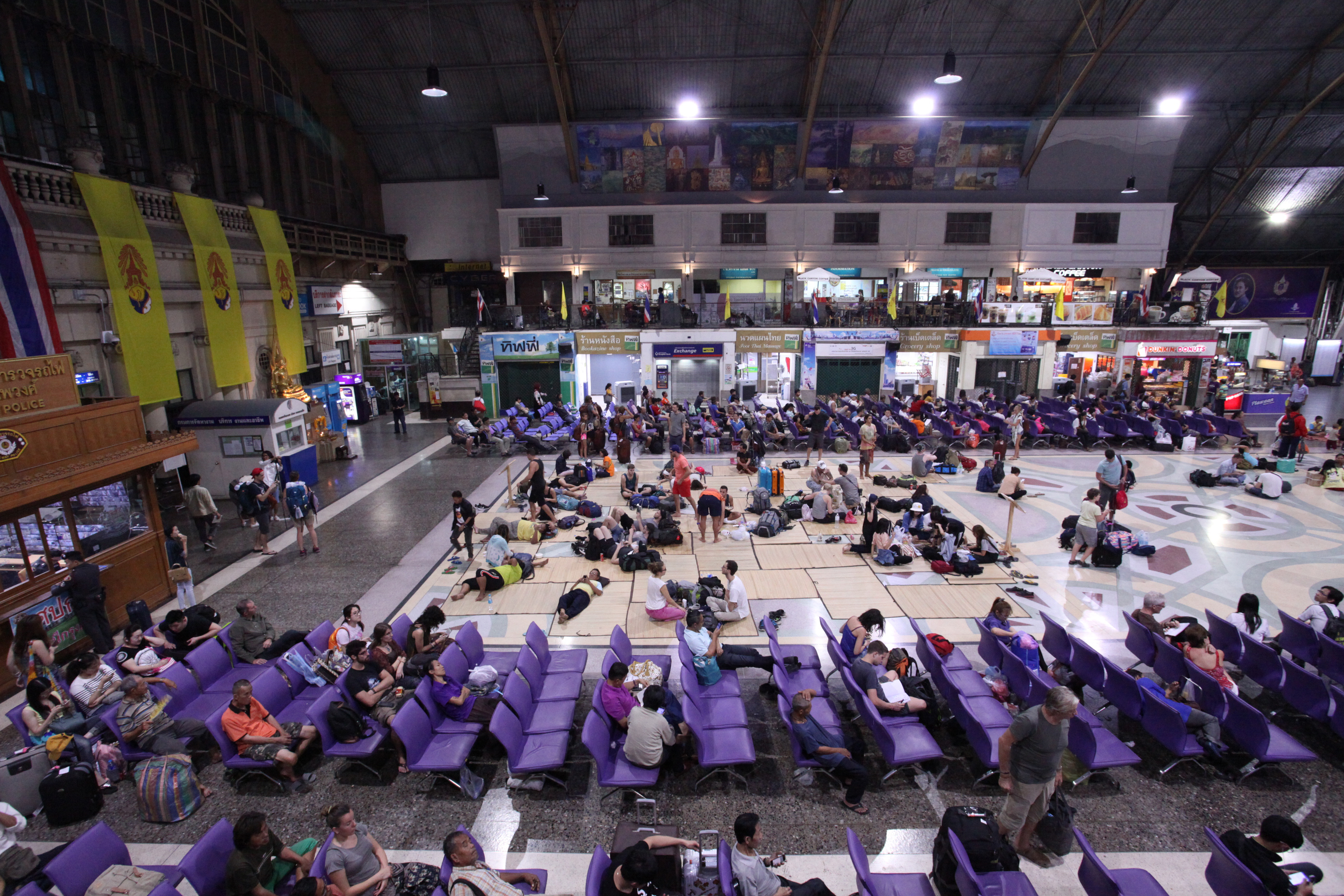
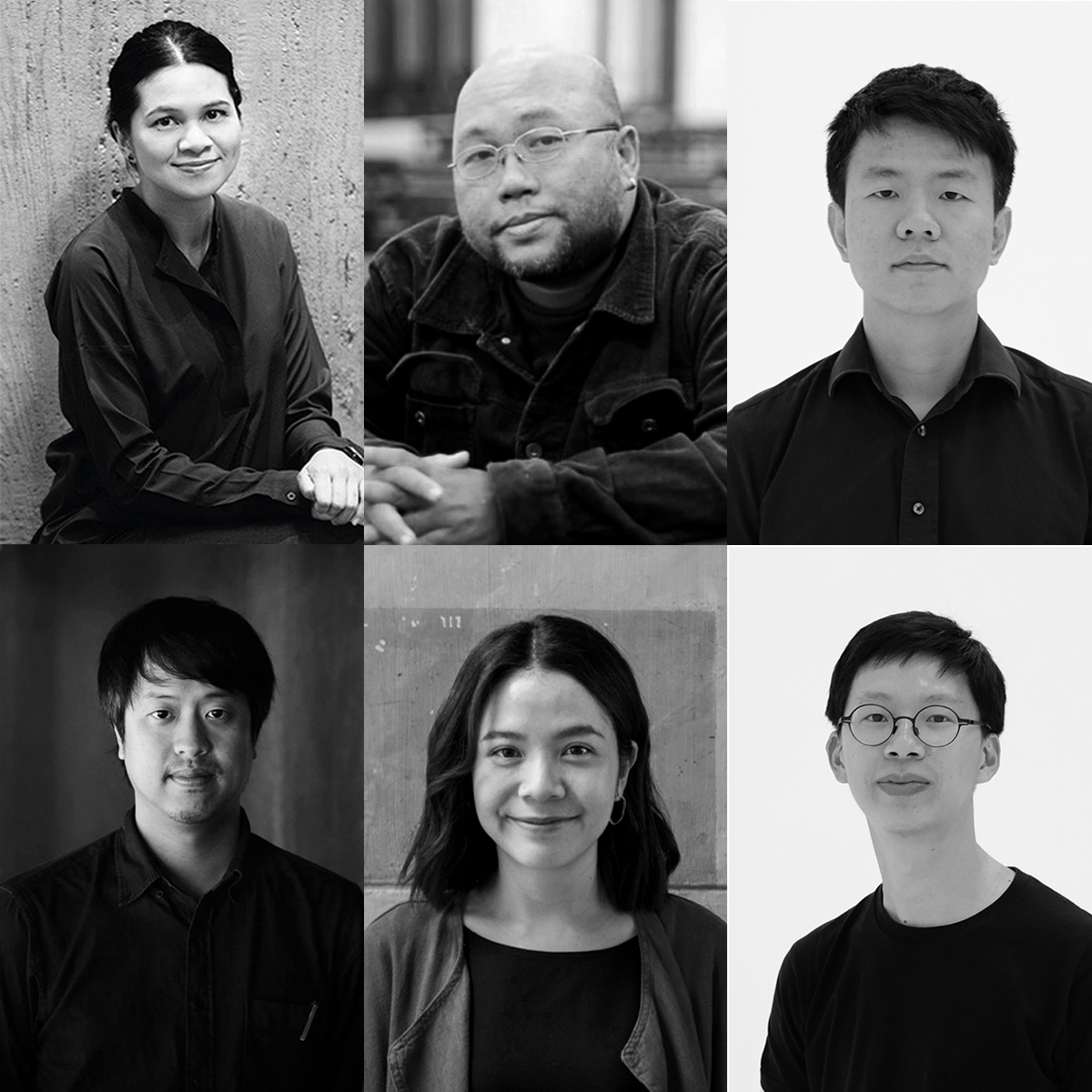
ASA-Community Act Network / Cloud-floor / IF (Integrated Field) / Workshop participants
Bangkok, Thailand
ASA-Community Act Network
Workshop participants:
Architectural students from various universities and Political Science students from Chulalongkorn University.
Cloud-floor:
Cloud-floor is a Bangkok-based alternative architectural practice and a global think tank committed to improving the livelihood and experience of city dwellers by harnessing the power of creativity and design. By implementing our ideas at a local scale, we aim to create case studies that are applicable as global solutions. For each of our projects, we put heavy emphasis on research that begins with exploring and unfolding every possibility of a creative solution. We, then, develop design briefs that culminate in multiple prototypes. Finally, we test and evaluate each prototype in order to ensure, not only an inventive but also a practical output for our beneficiaries, both commercial and community-based.
IF (Integrated Field):
F is a Thailand-based design office that believes in finding a specific question for each project in order to understand its “core” and to develop the design based on that issue throughout the whole process. With a belief in this method, IF was founded in 2011 by a group of friends that includes several architects, an interior architect, a landscape architect, and an industrial designer, with a shared goal to work together by combining strengths from as many fields as possible to create the work from our integrated inputs, which is captured in our core motto: “IF works in the Field of Integration”.





